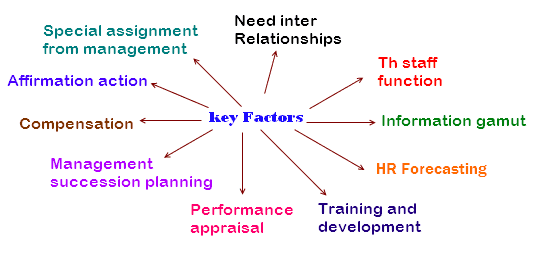Though the process would vary from organization to organization, generally it involves the following steps:
1) Briefing and orientation:
This is a preparatory meeting of key staff members to:
- discuss particular issues considered to be significant,
- chart out audit procedures, and
- develop plans and programmer of audit.
2) Scanning material information:
This involves scrutiny of all available information pertaining to the personnel, personnel handbooks and manuals, guides, appraisal forms, material on recruitment, computer capabilities and all such other information considered material.
3) Surveying employees:
Surveying employees involves interview with key managers, functional executives, top functionaries in the organisation, and even employees’ representatives, if necessary. The purpose is to pinpoint issues of concern, present strengths, anticipated needs and managerial philosophies on human resources.
4) Conducting interviews:
What questions to ask? The direction which audit must follow is based on issues developed through the scanning of information gathered for the purpose. However, the audit efforts will get impetus if clarity is obtained as to the key factors of human resource management selected for audit and the related questions that need to be examined.
The following model depicts the various key factors on which information needs during human resource audit need to be focused. It is developed from the interview guide used in an electronics company. It covers a wide range of topics of profound interest relating to human resource management practices in the organization. The questions to be asked on these topics need to be framed very carefully.
These questions may be developed by the interviewer/audit team on the following aspects as indicated against each topic. The process of the interview and the sequence of questions is often as important as their content. Another effective method is the ‘focus interview’. A focus interview involves meetings between a trained interviewer and selected members of the organization. Here the interviewer asks a variety of questions planned and prepared in the same fashion as the interview questionnaire explained earlier.

5) Synthesizing:
The data thus gathered is synthesized to present the
- current situation
- priorities
- staff pattern, and
- issues identified.
Similarly, future needs are identified and appropriate criteria developed for spotlighting the human resource priorities and specific recommendations made.
6) Reporting:
Just as the planning meetings of briefing and orientation, the results of the audit are discussed within several rounds with the managers and staff specialists. In the process, the issues that get crystallized are brought to the notice of the management in a formal report. Follow-ups are necessary after an audit to see if the action plan used to solve problems found this the audit worked or not.
In conclusion, human resource audit is an important approach to human resource planning. It is practical because if correctly conducted, it should increase the effectiveness of the design and implementation of human resource policies, planning and programmes. A periodic and systematic audit helps human resource planners develop and update employment and programme plans.
Audit Reports
The audit report is a comprehensive description of HR activities that includes both commendations for effective practices and recommendations for improving practices that are less effective. A recognition of both good and bad practices is more balanced and encourages wider acceptance of the report. An audit report contains several sections. One part is for line managers, another is for managers of specific HR functions, and the final part is for the HR managers. For line managers, the report summarises their HR objectives, responsibilities and duties. Examples of duties include interviewing applicants, training employees, evaluating performance, motivating workers, and satisfying employee needs. The report also identifies people’s problems. Violations of policies and employee relations laws are highlighted. Poor management practices are revealed in the report along with the recommendations.
The specialists who handle employment, training, compensation, and other activities also need feedback. The audit report they receive isolates areas of good and poor performance within their functions. For example, one audit team observed that many jobs did not have qualified replacements. This information was given to the manager of training and development along with the recommendation for more programs to develop promising supervisors and managers. The report may also provide other feedback such as attitudes of operating managers about the HR specialists’ efforts.
- The HR manager’s report contains all the information given to both operating mangers and staff specialists. In addition, the manager gets feedback about: Attitudes of operating managers and employees about the department’s benefits and services.
- A review of the departments’ objectives and plans to achieve them.
- HR problems and their implications.
- Recommendations for needed changes and the priority for their implementation.
With the information contained in the audit report, the HR manager can take a broad view of the function. Instead of solving problems in a random manner, the manager can focus on those which have the greatest potential for improving the department’s contribution to the organization. Perhaps the most important, the audit serves as the map for future efforts and a reference point for future audits. With knowledge of the department’s current performance, the manager can make long term plans to upgrade crucial activities. These plans identify new goals for the department, which serve as standards for future audit teams.





